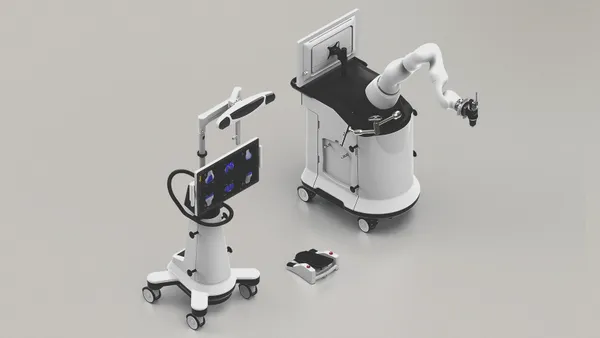Dive Brief:
-
A short, single-arm trial has generated evidence that transcatheter aortic valve replacement is safe and effective in low-risk patients with bicuspid aortic valve stenosis.
-
The Medtronic-sponsored clinical trial, data from which were published in JAMA Cardiology on Wednesday, found the 30-day incidence of mortality or disabling stroke in bicuspid patients is comparable to that seen in low-risk patients with trileaflet aortic-valve stenosis.
- While noting the limitations of the study, the principal investigators and authors of the paper framed the data as evidence that Medtronic’s Evolut R and Evolut PRO valve may be free from the problems that caused early studies of TAVR in bicuspid disease to report worse in-hospital outcomes.
Dive Insight:
Up to 40% of patients who undergo surgical aortic valve replacement have bicuspid disease. Yet, the evidence for the safety and efficacy of TAVR in low-risk bicuspid patients is limited. Early studies pointed to lower rates of device success and higher incidence of paravalvular leak in bicuspid patients, although they also found evidence early and new-generation TAVR products perform differently.
The strongest evidence yet in favor of the use of TAVR in low-risk bicuspid patients emerged earlier this year when researchers published data on the use of Edwards Lifesciences’ Sapien 3 and Medtronic’s Evolut R and Evolut PRO in the population.
Medtronic has now added to the evidence by releasing results from a clinical trial of its Evolut TAVR devices in bicuspid patients. The trial linked the TAVR devices to a 1.3% rate of 30-day mortality or disabling stroke. That compares to a rate of 0.8% to 1.0% in studies of tricuspid patients, although, as with all cross-trial comparisons, confounding variables may render that juxtaposition unreliable.
The TAVR devices also performed in line with expectations against other endpoints. Fifteen percent of patients required a new permanent pacemaker. That figure is slightly lower than the 17.8% seen in a study of Evolut R in tricuspid patients.
Medtronic achieved the results in a carefully screened patient population. The screening committee excluded 72 patients, typically because their anatomic dimensions were outside of the size range covered by the label or they had a trileaflet valve. In the real world, a more diverse set of patients may be treated, potentially leading to worse outcomes overall. Similarly, the 25 sites used in the trial may typically achieve better results than the average U.S. TAVR center.
More work is needed to show if the encouraging early signs seen in the study translate into positive long-term outcomes across the broader low-risk bicuspid population. The authors of the JAMA Cardiology paper identified the need for longer-term outcomes and said “carefully constructed randomized clinical trials comparing TAVR with surgery in this patient population should be considered prior to any changes in clinical guidelines for patients with bicuspid aortic valve disease undergoing AVR."










